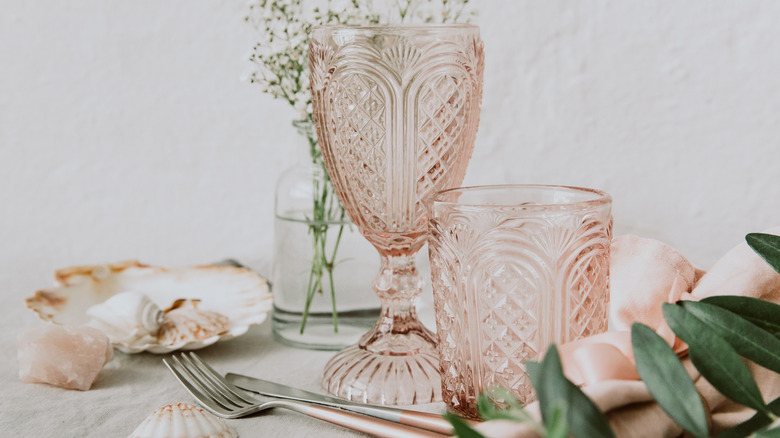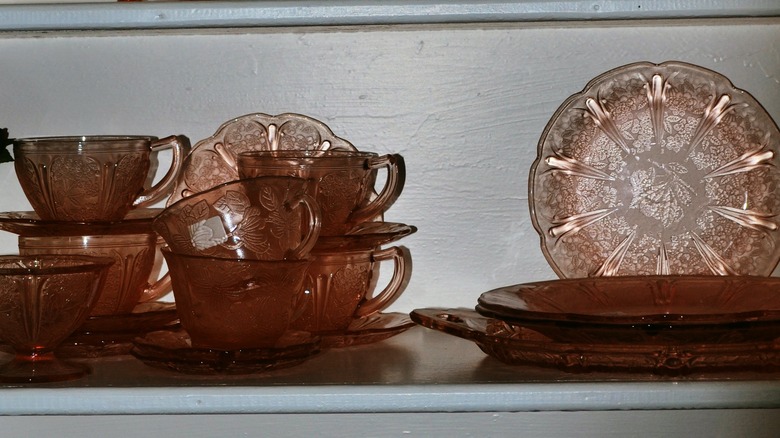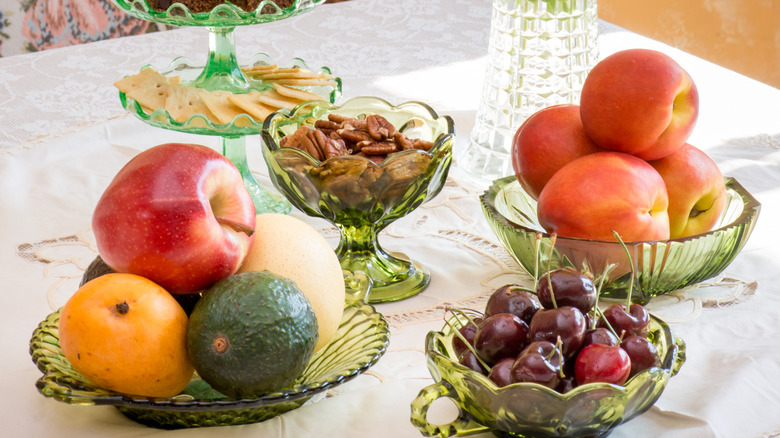What Is Depression Glass?
Ever noticed the dainty-looking pastel glass dishes commonly found on antique store shelves? This extremely popular depression glassware dates back nearly 100 years; mass-produced between 1920 and 1950, it quickly became highly collectible and still is today. During the Great Depression, cheaply made glassware was commonly distributed in boxes of food or handed out from movie theaters and other businesses as a promotional incentive to shop. JD's Realty & Auction notes that sets were also available for direct purchase, usually for less than two dollars for a 12-piece set. According to Invaluable, there were over 100 patterns of depression glass produced, with companies offering their own signature patterns.
Many families would cobble together a complete dinnerware set over time by taking advantage of these promotions. Although the glass often had flaws such as bubbles or inconsistent coloring due to the cost-cutting production methods, it quickly became a popular and attainable way to stock America's kitchen cabinets with attractive items at a time when many couldn't afford to buy quality hand-crafted dish sets. Common patterns, such as Cameo, Mayfair, American Sweetheart, Princess, and Royal Lace, reflect the fantasy of opulence that Americans aspired to as they collected their cheap glass dinnerware.
Identifying depression glass
According to Glass Bottle Marks, about 20 companies were responsible for the production of depression glass, mostly located in the mid-west or east coast. Sadly, many companies either didn't mark their wares or did so with a now long-gone paper label. Therefore, an item with no identifying company markings does not necessarily mean that it is not an authentic piece of depression glass. Unfortunately, there are a lot of imposters and reproductions out there, so it's important to familiarize yourself with the patterns and characteristics of authentic Depression-era glassware in order to accurately identify it.
Due to the production methods used to manufacture the ware, imperfect pieces with flaws like bubbles and visible seams are signs that a dish is probably authentic depression glass. Signs of wear, like chips and scratches, are also typical of real depression glass. Today, the flaws that are commonly found in these wares are regarded as a lovable quirk and don't necessarily lower the item's value.
Which pieces are rare?
Today, patterns and colors of depression glass that were the most popular during their production era can be commonly found at thrift and antique stores for a low price. Rarer patterns and colors that weren't popular and, therefore, not widely produced at the time are naturally harder to find and can sell for hundreds of dollars today. According to My Modern Met, translucent glassware commonly came in amber, yellow, pink, and green. Rarer colors included red, jadeite, cobalt, and black. Some opaque glass was also produced, including white glass, often referred to as milk glass. Rare colors fetch a higher price today than the most popular (and therefore most widely produced) shades.
Since depression glass was designed for daily use, it can be a challenge nowadays to find pieces without chips, cracks, or scratches in it. Hold glassware up to a light to locate potential cracks and scratches. Another ailment that commonly plagues depression glass today is referred to as "sick glass" by collectors: clouded etching in the glass due to the effects of being washed in dishwashers. Sick glass cannot be restored and has a decreased monetary value.


